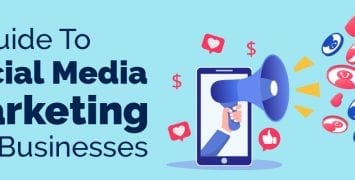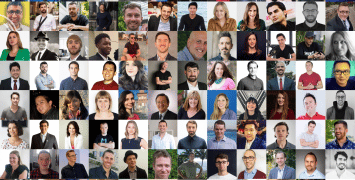Social media is an important part of any successful SEO campaign, but many marketers focus too much on the wrong platforms.
Facebook and Twitter are social media giants. So I understand the temptation to spend most of your energy focusing on them.
At times, however, Facebook and Twitter are too large for their own good. Sure, you have the potential to reach a large amount of people on these platforms. But the competition can be pretty fierce on these sites.
Plus, just because you’re reaching a large audience doesn’t mean you’re reaching an audience which is necessarily eager to buy your products.
Pinterest offers access to a unique, motivated base of potential customers – for the right brand. Let’s take a look at how Pinterest works, who their users are and if this smaller social media platform is the right choice for your brand.
Pinterest 101
Founded in 2010, Pinterest is an image-based social network with over 70 million users worldwide. People “pin” content they’re interested in.
Up to 80% of Pinterest users are women. The biggest age group is between 35 and 44, although younger women also use the site fairly heavily.
People who use Pinterest tend to really like it. Online shoppers specifically really like Pinterest; 55% of online shoppers say the site is their favorite social media platform.
Pinterest users like to buy, too. Compared to the average internet user, Pinterest users spend almost twice as much money online.
Here’s how to reach this audience:
A Picture is Worth a Thousand Words
Pinterest is an image based platform. This great news for some brands and not-so-great news for others. Specifically…
Pinterest is great if you sell a physical product which photographs well. For instance:
- Kitchenware
- Clothing
- Furniture
Any product which can be photographed will fit into Pinterest well. Any product which can be photographed and which appeals to women between the age of 35 and 44 will fit into Pinterest really well.
Unfortunately, Pinterest doesn’t make sense for every brand. If you sell a service, such as a B2B service, consistently finding dynamic images might be a bit of a struggle. While you might be able to use generic images somewhat, most likely this will be a lot of work for not-so-great results.
The first step is to determine if Pinterest is a good fit for your brand. If so, then you’ll want to create a Pinterest account and start posting.
When to Post on Pinterest
As with all other social media platforms, when you post can have a pretty big impact on the size of your potential audience. Generally speaking, you’ll want to post during these two timeframes:
- Weekdays around 9 pm
- Weekends between 7 and 9 am
These times makes a lot of sense when you consider that many Pinterest users are working women with families. They’ll check Pinterest at night when they’re winding down for the day. They’ll also check the platform during weekend mornings when they’re not rushing out the door to go to work.
Pinterest Retargeting Campaign
Visitor Retargeting is a Pinterest tool you’ll likely find very useful. This allows you to reach users who are already familiar with your brand have previously visited your site.
With a retargeting campaign, you’re not introducing your brand. You’re re-introducing your brand. This opens up many sales opportunities such as:
- You can promote a product someone considered but initially didn’t purchase
- You can promote products related to a recent purchase
- You can adjust your messaging to target a person’s specific reasons for not purchasing
To set up a retargeting campaign, you’ll use the Pinterest Business Manager. This allows you to install a conversion tag known as a Pinterest Tag.
Pinterest can Boost Your Brand
Pinterest is often overlooked by internet marketers. But for the right brand, Pinterest is a better choice than Facebook and Twitter combined.
If you sell a visual product which appeals to women, Pinterest can be an amazing way to connect with a gigantic base of potential customers.




